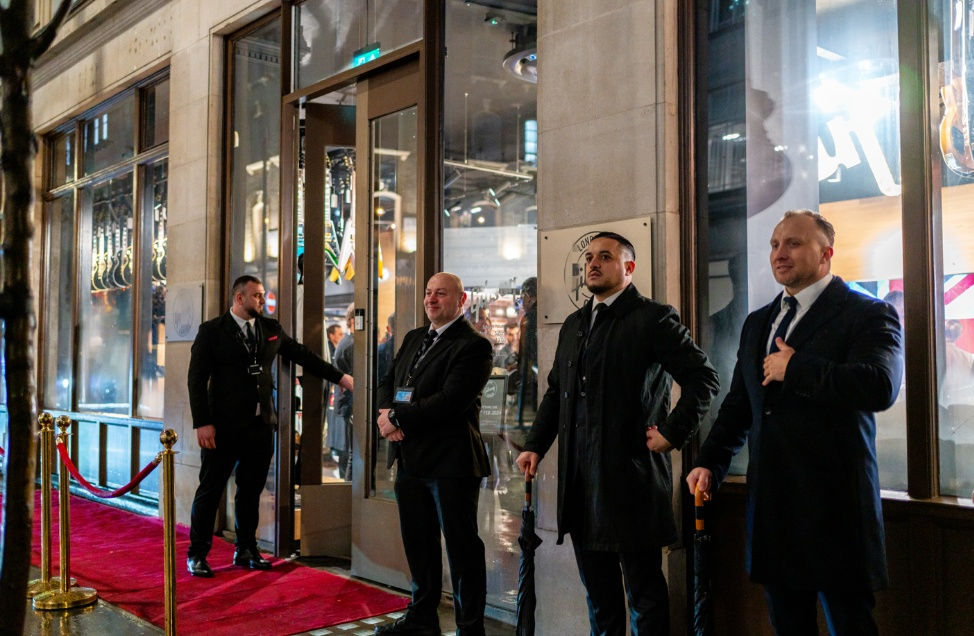What Is Martyn’s Law and How Will It Transform Public Venue Security
- Fahrenheit Security

- Oct 13
- 3 min read
Who Must Follow Martyn’s Law and What Does It Cover?
Martyn’s Law, formally called the Terrorism (Protection of Premises) Act 2025, introduces security requirements for public venues in the UK. Named after Martyn Hett and supported by campaigner Figen Murray, it was created to reduce risk and improve preparedness at public events.
The law covers venues with capacity for 200 or more guests. It defines two compliance categories: standard tier for venues with 200 to 799 attendees, and enhanced tier for those expecting 800 or more.
What Types of Venues and Events Are Affected?
Standard Tier Premises (200 to 799 capacity)
Community centres and leisure halls
Faith-based spaces that hold public gatherings
Local theatres, clubs, and small arenas
Enhanced Tier Premises (800 or more capacity)
Large stadiums and concert venues
Outdoor music festivals and national exhibitions
Convention centres used for public-facing events
Private bookings in closed premises are generally excluded unless the space is used in a public context.
What Security Measures Are Required for Compliance?
Standard Tier Requirements:
Conduct a basic risk assessment tailored to your site
Create an emergency plan that is accessible and clear to staff
Ensure all staff are trained to:
Recognise potential threats
Stay alert to unusual behaviour
Follow emergency procedures
Enhanced Tier Requirements:
Complete a detailed assessment that identifies vulnerabilities
Implement safety infrastructure such as:
Entry control zones
CCTV surveillance
Screening points
Establish well documented emergency procedures including:
Lockdown instructions
Multiple evacuation routes
Hold practice sessions and review plans often
Include emergency evacuation training as part of your venue’s incident response planning
How Should Event Planners Prepare Before 2027?
The law offers a two year transition period. To stay on track, consider this phased structure:
Within Six Months:
Confirm your venue's capacity and tier classification
Check existing processes for any safety gaps
Between Six and Eighteen Months:
Deliver staff training focused on public safety
Partner with security teams who hold SIA credentials
Develop and test early versions of your emergency plans
Final Six Months:
Host trial runs of evacuation and access control measures
Finalise all documentation
Review everything with safety advisers and community policing contacts
Dividing your timeline this way helps avoid last minute problems.
What Role Do Security Guards Play in Martyn’s Law?
Trained security staff are essential under Martyn’s Law. Their contributions include:
Monitoring entry routes and guest arrival zones
Observing behaviour patterns and reporting concerns quickly
Leading emergency evacuations and crowd control if needed
Patrolling outer areas to detect vulnerabilities
SIA licensing is mandatory for guards performing these roles. Their presence not only supports compliance but improves public trust.
What Are the Costs and How Can You Stay Within Budget?
Cost forecasts differ based on venue size:
Typical Annual Spend:
Standard tier: £330 (approximate)
Enhanced tier: £5,200 (average)
Budget Management Tactics:
Rotate part time guards to reduce hours
Use video surveillance where appropriate
Collaborate with local forums to cut advisory costs
Focus investment on key control areas and risk prone entry points
Spreading improvements across 24 months can make compliance affordable.
How Can You Keep Guests Safe Without Creating Panic?
Public reassurance is vital for a positive event experience. Consider these tips:
Speak clearly with staff about roles and response plans
Use simple signs to mark exits and help points
Prepare guests ahead of time by sharing safety expectations
Avoid jargon or security heavy language that could create worry
An informed and calm audience is more likely to cooperate during an emergency.
Where Can You Find Local Help and Partnership Support?
Working with regional partners enhances safety readiness. Useful contacts include:
Local authority resilience teams
Community safety groups run by councils
Police led event safety programmes
Safety alliances in large towns or cities
Regional venue safety networks and counter terror advice services often offer shared training and planning support
These connections offer practical help and real time updates.
Frequently Asked Questions About Martyn’s Law
Do pubs and bars need to comply?
Yes, if they regularly hold public events with 200 or more guests.
Are volunteers considered trained staff?
They can be, provided they complete recognised safety training.
What happens if a venue fails to comply by 2027?
The venue could face financial penalties or legal action.
Can compliance be phased in for growing venues?
Yes. Plans should scale as risk and capacity increase.
How often should evacuation drills be done?
Annual drills are advised for enhanced venues, and after layout changes.
Where to Get Professional Guidance and Resources
Venues can stay compliant by:
Visiting GOV.UK for guidance on Martyn’s Law
Working with local police and security consultants
Contacting an SIA licensed provider for planning help
Seeking tailored advice to build an anti terror venue strategy and maintain public event safety compliance
Martyn’s Law encourages practical preparation, not overreaction. Whether your venue is large or small, early planning helps create safer spaces for everyone.








Comments